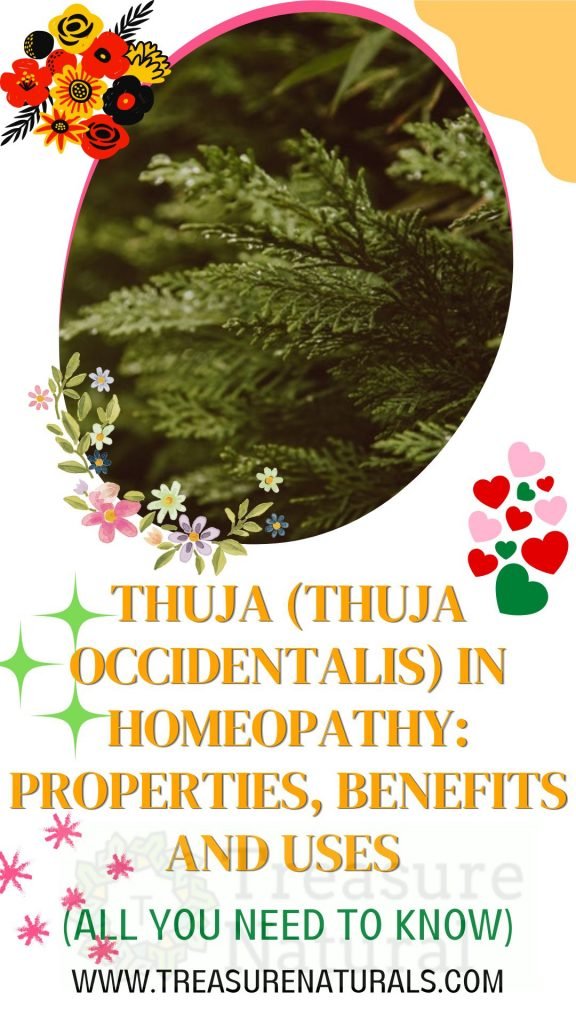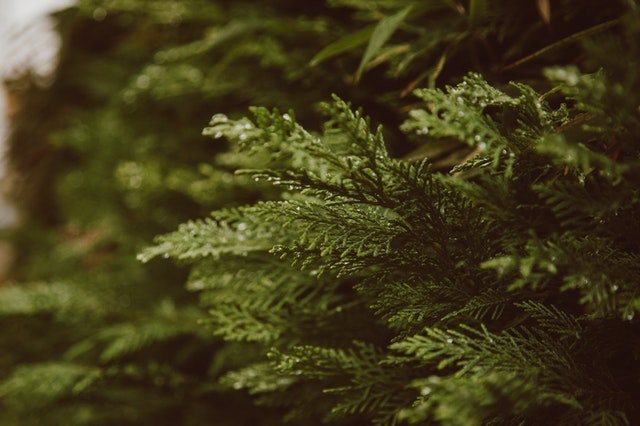
Thuja is a homeopathic remedy of plant origin; in fact, it is born from the Thuja occidentalis plant, or White cedar, a species that belongs to the Cupressaceae family whose natural habitat is Canada and North America.
Thuja occidentalis: the plant
Thuja occidentalis in Europe was introduced at the time of Francis I, King of France (1515-1547), for ornamental purposes in parks and gardens.
This plant easily adapts to cold climates, which is why its natural habitat is located in the northern states of America (eastern part of Canada and the United States of America) and prefers clayey and calcareous soils.
Thuja is a plant with an elegant bearing; the erect stem is covered with a thick orange-brown bark. The densely branched foliage has, instead, pyramidal development. Its growth is rather slow so that it can take over 150 years to reach 15 meters in height. The twigs of this plant when rubbed give off an intense scent of apples.
Its flowering takes place between March and April. The fruiting bodies, on the other hand, are ovoid strobili of 10-15 mm of length, of red-brownish colour, formed of 6-8 scales with smooth apex that when ripe open in a rosette with rounded scales and without hooks.
Thuja occidentalis: use in the past
The name Thuja comes from the Greek and means “to purify with perfumes, sacrifice”, in fact in ancient times this type of wood, precisely because of its aromatic scent, was burned during sacrifices. For these properties, Thuja was also used by the ancient Egyptians during embalming procedures. The American Indians, on the other hand, boiled the leaves and branches in lard in order to obtain a solution used to relieve joint and muscle pain, malaria, cough, gout and rheumatism. They also exploited the strength, lightness and durability of the wood of the plant for various jobs, such as the construction of houses and canoes.
It was used for the first time in medicine by Nicolas Lemery, an exponent of French chemistry of the seventeenth century, who described its properties and attributed an anthelmintic action to the essential oil contained in it. It has also been used topically in case of vegetative formations and hemorrhoids.
The homeopathic remedy thuja and its properties
The homeopathic remedy is obtained from the leaves and branches collected during the flowering period of the plant, chopped, left to rest in alcohol, and then filtered. Once the mother tincture is obtained, it is then diluted and dynamized.
The homeopathic remedy Thuja is a polycreste widely known and used, thanks to its properties, in the treatment of skin diseases and is a valid aid in the treatment of warts. In Homeopathy it is used as a tonic able to positively affect the skin, mucous membranes and central nervous system. It also has a calming action on the patient’s mood: it has a relaxing effect in situations of tension, impatience and agitation; in their absence, however, it can be soporific.
Thuja: what it is used for
Thuja is used according to Homeopathy for the following major disorders:
- irritability
- strong impatience
- pessimism and anxiety
- disturbed night sleep
- severe headache
- tensions of the facial muscles that worsen in bending the head forward
- sudden migraine attacks especially on the left side
- warts that fall apart easily
- skin spots and in the very common
- brittle nails that present with cuts and lines
- very noticeable veins, especially on the back of the hand
- predisposition to varicose veins
- sweating accompanied by a very intense smell
- constipation
- lack of appetite
- predisposition to polyps
- cystitis
- vagienal secretions
- abdominal and menstrual pain
The Thuja type in homeopathy

The subject cured through the homeopathic remedy Thuja is usually unscrupulous, anxious, meticulous. The disposition to doubt about everything makes him scrupulous in the little things: he goes back to see if the light is off, checks the gas, the keys is an essentially insecure person.
The Thuja type usually has a fair complexion and suffers from skin problems, such as moles, styes, blackheads and frequently presents capillary fragility. For him, daily duties are a burden, he is often tired and depressed, stress consumes him, but he also knows how to be a cold calculator.
Patient Thuja corresponds to the following character properties of the remedy:
- depression
- melancholy
- despair
- concern for the future
- intolerant of contradiction
- irritable even for small reasons
- illusion of weakness
- illusion of being breakable like glass
- mercurial
The Thuja remedy is also indicated in patients who express the following symptomatic moralizations:
- worsens with cold
- worsens with damp
- worsens from afternoon to night
- improves by sweating
- improves with movement
- improves with secretions and excretions
- improves with the heat
- improves with dry weather






